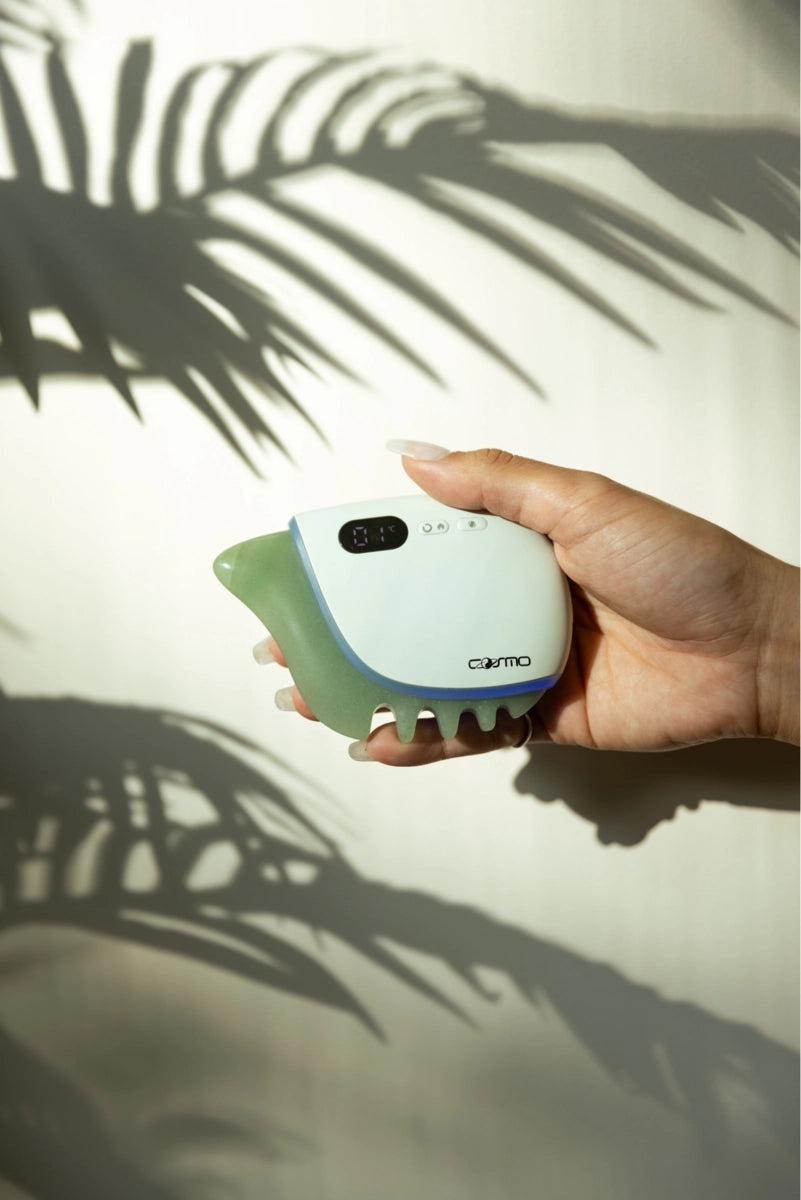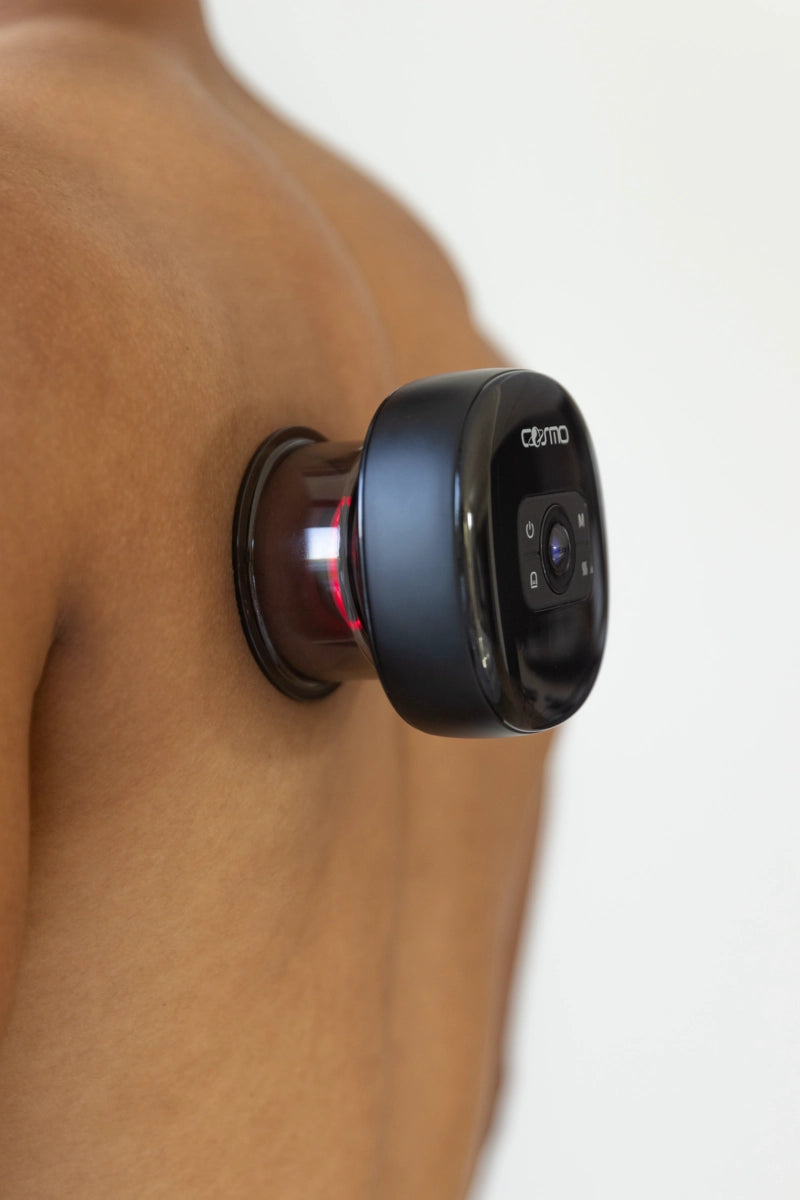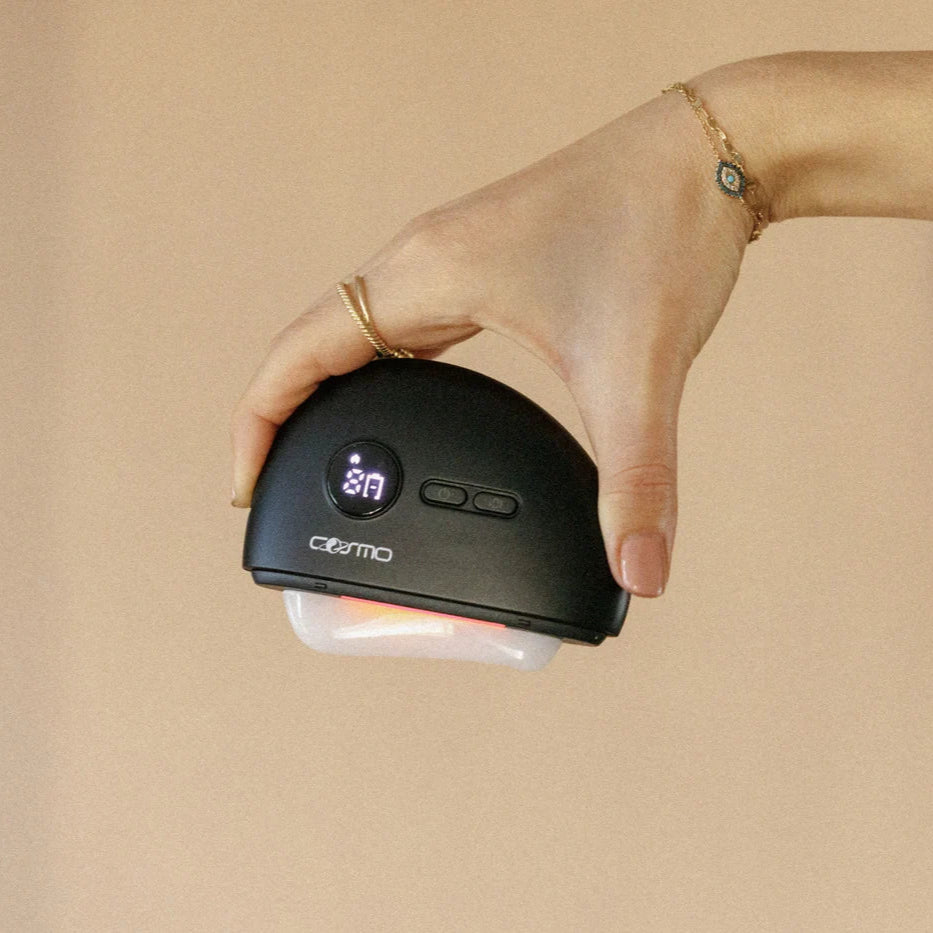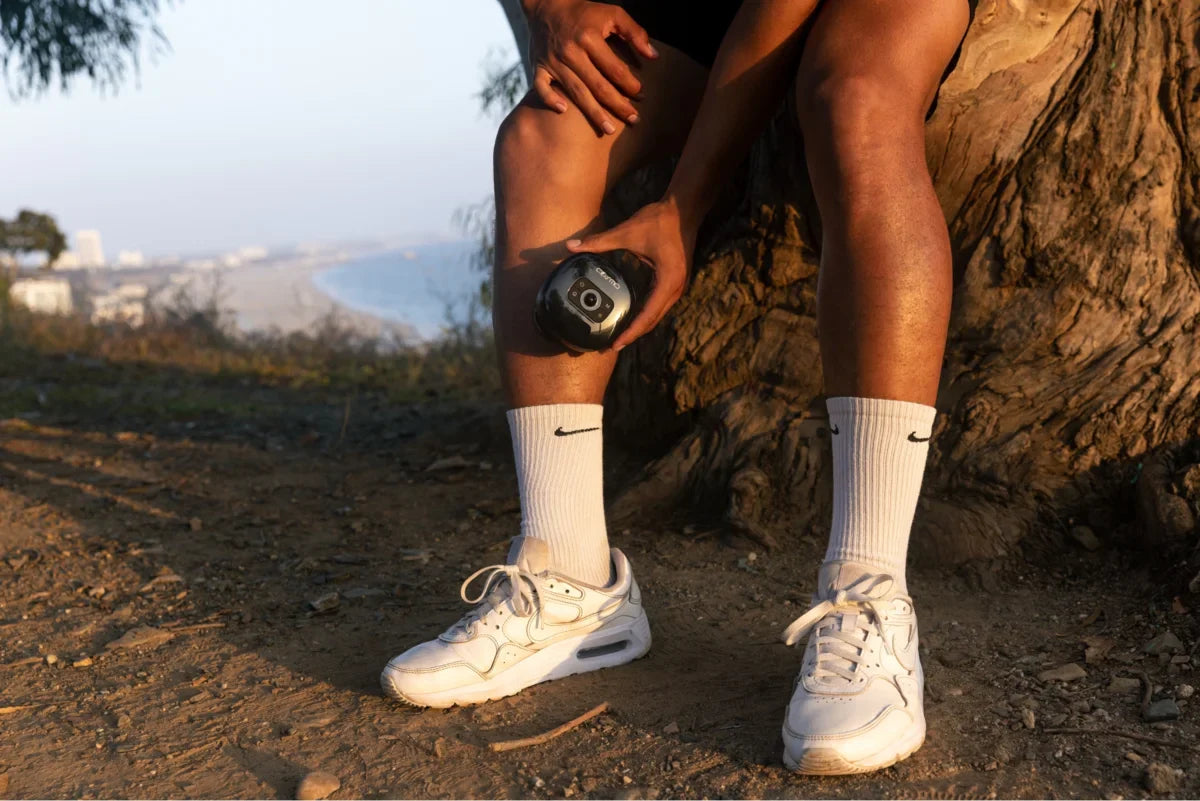For centuries, Traditional Chinese Medicine (TCM) has described networks of invisible energy channels in the body known as meridians. In parallel, modern anatomy has revealed an intricate web of connective tissue called fascia that envelops and connects every muscle, organ, and cell. This raises a fascinating question: could these two systems actually be related? Recent research and clinical insights suggest that the connection between fascia and meridians may indeed be real, bridging ancient healing wisdom with contemporary science. In this article, we take a technical yet accessible look at fascia’s role in the body, the nature of TCM meridians, and how therapies like acupuncture, cupping, and gua sha might tie the two together. By understanding this linkage, we gain a more holistic view of the body’s “hidden highways” and new approaches to health and healing.
Fascia: The Body’s Connective Tissue Web
Fascia is the continuous connective tissue matrix that surrounds, supports, and links every structure in the body. Imagine a three-dimensional spiderweb of collagen fibers wrapping around muscles, bones, nerves, blood vessels, and organs. This fascia forms a unified network without beginning or end, effectively connecting distant parts of the body into one functional whole. In simpler terms, fascia holds every organ, blood vessel, bone, nerve fiber, and muscle in place. It provides structural cohesion and also contains nerves, making it nearly as sensitive as skin. When healthy, fascia is pliable and well-hydrated, sliding smoothly as we move. However, stress, injury, or inactivity can cause fascia to tighten, thicken, or form adhesions (knots). Tight fascia can restrict motion, entrap nerves, and contribute to pain.

One important concept in fascia anatomy is the presence of fascia lines. These are long chains of fascial connections running through the body – for example, the superficial back line runs from the soles of the feet up the calves, hamstrings, spine, and finally to the scalp. Such lines transmit tension and force across multiple joints. If one part of a fascia line is restricted, it can affect distant regions along the same line. Therapists use these insights to treat pain holistically: instead of focusing only on a local symptom, they may release tension along an entire fascial line. The concept of fascia lines is remarkably consistent with the idea that the body functions as an integrated whole. It even hints at parallels with TCM’s meridians, which also traverse the body longitudinally. We will explore those parallels shortly.
TCM Meridians: Ancient Energy Pathways
Traditional Chinese acupuncture theory holds that health is governed by the flow of a vital energy called Qi through a network of channels known as TCM meridians. These meridians form an invisible lattice that links the internal organs with various tissues and surfaces of the body. Classical texts describe twelve primary meridians and additional “extraordinary” meridians. In TCM philosophy, when Qi flows freely through the meridians, the body is in balance and healthy. If Qi becomes blocked or stagnant in a meridian, dysfunction and disease may occur in the corresponding organs or regions.
Meridians are often likened to rivers of energy: they have specific routes on the body but have no obvious anatomical structure visible to the naked eye. Along these channels lie acupuncture points – discrete spots on the skin where Qi is accessed and can be influenced. Stimulating an acupoint is thought to clear blockages and restore normal flow in that meridian, thereby addressing ailments. For example, an acupuncturist treating migraine might insert needles along the gallbladder meridian on the head and neck, aiming to unblock energy in that pathway and relieve pain.
It’s important to note that TCM meridians are not blood vessels or nerves, though they often run near neurovascular pathways. They are a separate conceptual system. Early practitioners inferred their existence through clinical observation and palpation, developing detailed meridian maps long before modern science. TCM literature portrays meridians as linking “interior to exterior” – connecting deep organs to specific skin regions, muscles, and even emotions. This holistic connectivity is why, say, a problem in the liver might manifest as eye or tendon issues in TCM diagnosis.
Modern skeptics have sometimes questioned meridians, given that they can’t be dissected out like an artery. Yet TCM has always described them as functional pathways, detectable by their effects rather than by gross anatomy. Notably, acupoints along meridians often coincide with tender spots or depressions between muscles and tendons – hinting there could be underlying physical correlates, which brings us to scientific evidence for TCM meridians.
Fascia as the Physical Meridians
If meridians aren’t hollow tubes like blood vessels, what are they? A growing number of scientists believe the answer lies in the body’s connective tissue network. The hypothesis is that the meridians of acupuncture are essentially the body's fascia network viewed through the lens of energy and function. In fact, a comprehensive review of evidence concluded that the fascia network is likely the anatomical basis for acupuncture points and meridians. In other words, meridians may simply be the “maps” of continuity in our connective tissue, and acupoints are spots where that network is most accessible or responsive.
How could fascia serve as meridians? Consider that fascia is everywhere and connects everything – this recalls the way meridians link the whole body. Fascia also conducts bioelectrical signals (it’s rich in collagen, which can carry electric charges) and can transmit mechanical tension. When an acupuncture needle is inserted, it interacts with fascia (more on this in the next section), sending signals through the connective tissue web. Those signals can travel far from the needle site, potentially explaining why needling one spot can affect an organ or region elsewhere.
Fascia’s unique role in the body extends far beyond its function as a mere connective tissue. Increasingly, it is recognized as a dual pathway—serving both as a tangible, physical structure and as a potential energetic conduit, especially when viewed through the lens of Traditional Chinese Medicine (TCM). Anatomically, fascia forms a continuous, three-dimensional matrix that envelops and interlinks every muscle, organ, bone, nerve, and vessel. This physical web transmits mechanical forces, distributes tension, and provides essential support, allowing the body to move as an integrated whole. When you activate a muscle or experience strain in one area, the resulting force is dispersed throughout the fascial network, affecting distant regions. This concept is exemplified in the idea of “myofascial chains” or “anatomy trains,” where lines of tension and movement can be traced across the body—mirroring the mapped routes of TCM meridians.
Yet fascia’s significance may not be limited to biomechanics alone. Emerging research suggests that fascia’s composition—rich in collagen, water, and embedded nerve endings—enables it to conduct bioelectrical signals and mediate subtle physiological communication. In TCM, meridians are described as channels for the flow of Qi, or life energy. The striking anatomical overlap between myofascial pathways and meridian maps has led many to propose that fascia is not just a physical structure, but also the substrate through which energetic information travels. This dual role positions fascia as a bridge between the measurable and the subtle, the structural and the energetic.
The Impact of Stretching and Movement on Meridians and Fascia
Stretching and specific movement practices—such as resistance stretching, yoga, and targeted mobility exercises—play a profound role in influencing both the body’s fascial network and the meridian pathways described in Traditional Chinese Medicine (TCM). The fascial system forms a continuous, adaptable web that envelops muscles, bones, and organs, transmitting tension and force throughout the body. When we engage in stretching, especially dynamic or resistance-based forms, we do more than simply elongate muscles: we actively mobilize and hydrate the fascia, breaking up adhesions and restoring its pliability. This improved fascial health is not only crucial for physical flexibility and pain reduction, but it may also directly affect the flow of energy along the meridian channels. According to emerging research and clinical observation, many meridian pathways closely follow fascial planes and lines of tension in the body. As such, when a stretch targets a specific fascial line—like the superficial back line or the lateral chain—it may simultaneously influence the corresponding meridian, promoting the free flow of Qi and supporting organ and tissue health.
Resistance stretching is a particularly notable example, as it combines muscle contraction with elongation, generating a unique internal force that “exfoliates” fascia from within. This technique can help remove dense, dehydrated areas of fascia that restrict movement and block energetic flow. Practitioners report that regular resistance stretching not only increases range of motion but can also “open” meridian channels, making the body more receptive to therapies like acupuncture and enhancing overall vitality. Yoga, too, is renowned for its emphasis on whole-body stretches that trace the length of myofascial and meridian pathways. Poses such as downward dog, spinal twists, or deep lunges systematically lengthen multiple fascia lines, which may explain why yoga practitioners often describe a sense of energetic release and emotional balance after practice. Targeted mobility exercises—such as foam rolling, dynamic stretching, or active isolated stretching—can also be tailored to address specific fascial chains and their associated meridians, helping relieve localized tension and restore global movement patterns.
The benefits of these movement practices extend beyond the physical. By releasing restrictions in the fascia, stretching may help unblock stagnant Qi along meridian channels, supporting not just musculoskeletal health but also internal organ function and emotional well-being. Many individuals notice improvements in posture, reduced chronic pain, greater flexibility, and even emotional shifts after consistent stretching routines. In this way, movement becomes a bridge between ancient energy medicine and modern anatomical science, offering a holistic approach to maintaining the body’s interconnected systems. Whether through resistance stretching, yoga, or targeted mobility work, nurturing the health of both fascia and meridians can lead to profound improvements in physical and energetic vitality.
Acupuncture’s Impact on Fascia
Acupuncture, long understood through the lens of traditional energy pathways, is now being increasingly recognized for its tangible impact on the body's connective tissues, specifically fascia. Modern research is illuminating how the mechanical and cellular effects of acupuncture on this intricate network contribute to its therapeutic benefits, moving beyond a purely energetic explanation to a more concrete physiological understanding.
-
Direct Fascial Engagement: Acupuncture needles exert direct mechanical effects on fascia, much like spaghetti wrapping around a fork when twisted. This precise action causes localized deformation within the fascial network and stimulates mechanoreceptors, which are sensory receptors that respond to mechanical pressure or distortion. Dr. Helene Langevin's research, utilizing ultrasound imaging, has visibly demonstrated this phenomenon. This direct physical interaction with the connective tissue is crucial, initiating a series of cellular responses that contribute to pain relief and improved tissue function.
-
Cellular Response Triggered: The mechanical stimulation from acupuncture needles triggers dynamic cellular responses within the connective tissue. Fibroblast cells, key players in collagen production and tissue repair, change their shape and release biochemical signals in response to the needle's presence and manipulation. This suggests that the needle doesn't just physically disrupt tissue but actively engages the cells to initiate a healing cascade. This cellular communication is vital for understanding how acupuncture affects fascia.
-
Physiological Basis for Release: Acupuncture for fascia release is through inducing a controlled micro-stretch or minor injury in the fascial fibers. This micro-trauma can help to reset tissue tension and break down adhesions that contribute to pain and restricted movement. Similar to a deep tissue massage, the precision of a needle allows for deeper penetration and targeted intervention in areas of tightness. This targeted disruption can relax contracted fibers and enhance localized circulation, promoting the release of fascial restrictions.
-
Systemic Fascial Effects: Needling at specific acupuncture points can have systemic effects that extend beyond the immediate needle site, implicating interconnected fascia pathways throughout the body. Research has shown that acupuncture can increase tissue stretch and flexibility in areas distant from where the needles are inserted. This suggests that the fascial network acts as a conduit for these effects, explaining why stimulating one point can relieve tightness in an entire muscle chain due to the continuous nature of fascia.
-
Fibroblast Reorganization, Relaxation: Acupuncture has a profound influence on fibroblast behavior, leading to a reorganization of their cytoskeleton and an active relaxation of tissue. This means that after acupuncture treatment, fibroblasts can change their internal structure and actively contribute to the loosening and lengthening of fascial tissues. This cellular-level change is critical for long-term relief from stiffness and pain, as it addresses the underlying tissue tension rather than merely masking symptoms.
The growing body of evidence regarding acupuncture's interaction with fascia provides a compelling explanation for its efficacy in treating musculoskeletal conditions and chronic pain. This understanding not only validates traditional practices but also opens new avenues for integrating acupuncture into modern therapeutic approaches, offering a powerful tool for improving tissue health and overall well-being.

Cupping Therapy for Fascial Release
Another ancient TCM treatment, cupping therapy, has gained widespread popularity for its benefits on sore muscles and fascia. In cupping, a cup (traditionally glass, now often plastic or silicone) is placed on the skin and suction is applied, pulling the skin upward into the cup. This negative pressure creates a localized decompression effect. From a fascia perspective, what cupping does is essentially the opposite of massage: instead of pressing down on tissue, it lifts and separates the layers. The suction from a cup can literally grab and lift the fascia, stretching tight connective tissue and creating space for fluids to flow. As a result, blood circulation in the area increases dramatically – you might notice the hallmark circular red marks after a strong cupping session, which are a sign of blood drawn to the surface. Increased blood flow brings oxygen and nutrients to stiff muscles and carries away metabolic waste. Cupping also promotes lymphatic drainage, helping clear stagnation and reduce inflammation. In essence, it is often used as cupping therapy for tight fascia, aiming to loosen adhesions and knots by pulling them apart.
Many athletes and physical therapists now incorporate cupping as a myofascial release technique. For example, tight IT band fascia on the outer thigh (which can cause knee pain) might be treated with sliding cups that glide along that fascia line, lifting the tissue and restoring its glide. People with chronic back or neck tension also report relief after cupping, as the technique relieves pressure and “stuckness” in the fascia. Clinical observations back this up: improved range of motion and reduced pain often follow a cupping session. In fact, a 2012 study found that cupping therapy significantly increased skin and muscle elasticity in the treated region, suggesting it enhanced the flexibility of the fascia there. Another study using MRI imaging showed that cupping’s suction affects not just superficial skin but also pulls on deeper fascia and even muscle tissue, indicating a deep-reaching effect.
Historically, TCM explained cupping as a way to “move blood and Qi” and expel stagnation or pathogenic factors. In modern terms, those ideas translate well to improving microcirculation and relieving tissue hypoxia in tight fascia. By separating adhesions, cupping can reduce pain and allow muscles to contract and expand more freely. It likely also activates sensory nerves in the skin and fascia that trigger pain-relieving pathways (much like a deep stretch or a massage does). Some evidence even suggests cupping can down-regulate the nervous system’s pain signals and reduce sensitivity (i.e., it may help with central sensitization in chronic pain).
One reason cupping has surged in use is that it’s relatively simple and safe, and now technology has made it even more accessible. Modern cupping therapy devices like Cosmo’s NovaCup allow people to perform at-home cupping therapy with controlled suction, heat, and even vibration features. This means individuals can self-treat tight fascia and sore spots on a regular basis, rather than only seeing a practitioner. For example, using a portable electric cup on the back or legs for 10 minutes can mimic aspects of a professional cupping session. These devices typically let you adjust suction intensity and even move the cup around for a massage-like effect. It’s important, of course, to follow guidelines (avoiding cupping over open wounds, not leaving cups on too long, etc.), but generally at-home cupping is well-tolerated and effective for maintenance of fascial health. By integrating such tools into wellness routines, people can address fascial tightness as it arises – preventing small issues from escalating.
Cupping therapy acts as a myofascial decompression technique. It offers a unique way to boost circulation and mobility in the fascia that complements the compression techniques of massage or foam rolling. Whether performed by an expert or with a home device, cupping can be a powerful method to restore flexibility in the connective tissue, relieve pain, and enhance recovery. It’s a beautiful example of an ancient practice finding its explanation (and enhancement) through modern fascial science.
Gua Sha and Myofascial Massage
Gua sha, another traditional East Asian technique, involves “scraping” the skin with a smooth-edged tool (often jade or bone) to improve circulation and relieve pain. It is essentially a form of manual therapy or massage for fascia that uses friction instead of pressure. In a gua sha treatment, the practitioner applies oil to the skin and then firmly strokes the tool along muscle areas (usually in one direction, e.g., downward along the back or neck). This produces a transient petechiae rash – tiny red spots or bruising – which indicates increased surface blood flow and the release of stagnation. The idea in TCM is to draw out “sha” (toxins or stagnant blood) to the surface, thereby alleviating underlying blockages. From a fascia standpoint, gua sha’s scraping motion likely helps break up fascial adhesions and encourages fluid movement in superficial fascial layers.
Gua sha is not only used for back and neck pain; it has evolved into popular cosmetic and wellness practices as well. A gentle variant called the gua sha facial has become a skincare trend worldwide. In a gua sha facial, a small smooth stone (often jade or rose quartz) is lightly stroked over the face and neck in specific patterns. The pressure is much lighter than therapeutic gua sha, so it doesn’t cause bruising. The goal is to stimulate lymphatic drainage in the superficial fascia of the face, reduce puffiness, and increase blood circulation for a healthy glow. Indeed, many users report that regular gua sha facials lead to a clearer complexion, lifted and toned-looking skin, and relief from jaw tension or sinus pressure. By coaxing sluggish lymph fluid away (to be filtered and eliminated by lymph nodes), gua sha can decongest the face – this translates to reduced under-eye swelling and sharper contours. The improved blood flow nourishes the skin, possibly even boosting collagen production over time. Essentially, the gua sha facial is a beauty adaptation of a fascia therapy: it treats the connective tissue under the skin to support skin health and appearance.
From a technical perspective, gua sha and related manual therapies show how mechanical stimulation of fascia can yield whole-body benefits. Scraping a muscle’s fascia can reflexively relax that muscle and others along the chain (perhaps via sensory nerve signals or via the meridian network). It also simply feels relieving – similar to how one might instinctively rub a sore spot. There is a release of endorphins and a down-regulation of pain signals, providing an immediate sense of relief and relaxation. As more people embrace gua sha tools at home, it’s another example of an ancient practice being used in modern self-care for fascia. A simple gua sha routine on the neck and shoulders can melt away tech-neck stiffness; a routine on the legs can soothe tired muscles after a long day.

To avoid confusion, it’s worth noting that gua sha is sometimes referred to as “scraping massage” or “coining” (in Southeast Asia). While highly effective, it should be done correctly: using the right angle and moderate pressure to avoid injuring the skin. When done properly, gua sha is generally safe. The temporary redness is normal and not usually painful. As always, people on blood thinners or with certain conditions should exercise caution, but for most, gua sha is a low-risk, high-reward method to maintain healthy fascia.
Practical Protocols: Applications for Fascia and Meridians
To support fascia and meridian health, you can use step-by-step protocols like acupuncture, cupping, and gua sha. Acupuncture involves a practitioner placing fine needles at specific points to stimulate energy flow and fascia. At home, cupping uses suction cups on oiled skin to lift fascia and improve circulation, while gua sha uses a smooth tool to stroke oiled skin and relax muscles. These therapies can be combined for better results, such as stretching before treatment or using gua sha after a shower. Start gently, and consult a professional if you have health concerns. Regular use of these methods can help maintain fascia health, meridian flow, and overall well-being.
The bridge between fascia and TCM meridians encourages us to see the body not as isolated parts, but as an interconnected, living web. It validates ancient observations with cutting-edge evidence, enriching both domains. Whether one approaches it from a standpoint of acupuncture theory or anatomy, nurturing the free flow in these networks – through techniques like acupuncture, cupping therapy, gua sha, or targeted movement – can lead to profound improvements in well-being. The convergence of fascia and meridian knowledge is a testament to how old and new can illuminate each other, offering us a deeper appreciation of the unity of the human body.
Sources
-
hopkinsmedicine.org Johns Hopkins Medicine – “Muscle Pain: It May Actually Be Your Fascia.” (Definition of fascia as connective tissue surrounding every organ and muscle)
-
hopkinsmedicine.org Johns Hopkins Medicine – “Acupuncture.” (Explanation of TCM meridians as channels where vital energy flows, and imbalance leads to disease)
-
aipro.info Fred Gallo, PhD (compiled research) – “Evidence of Meridians.” (French study showing radioactive tracers injected at acupoints travel along traditional meridian pathways)
-
researchgate.net Bai et al., 2011 – Evidence-Based Complementary and Alternative Medicine (Review article concluding that the fascia network may be the anatomical basis of acupuncture points and meridians)
-
comis.med.uvm.edu Helene Langevin (University of Vermont) – Research summary (Studies demonstrating that mechanical stimulation via acupuncture needles induces cellular responses in connective tissue)
-
medbridge.com Medbridge blog – “The Science of Fascia: How Cupping Therapy Enhances Mobility and Reduces Pain.” (Describes how cupping lifts and separates fascial layers, increasing circulation and reducing fascial densification)
-
pubmed.ncbi.nlm.nih.gov Nielsen et al., 2007 – Explore (NY) (Study showing gua sha scraping caused a fourfold increase in local microcirculation and corresponding pain relief)












